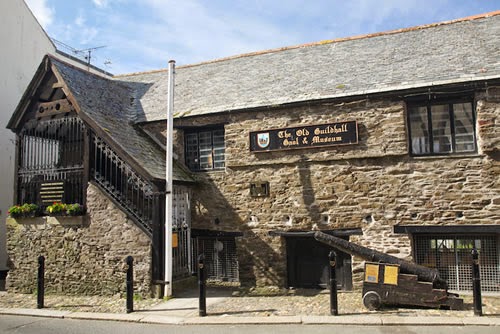Guilds were like clubs for people who did the same job. In the Middle Ages, there were guilds for weavers, goldsmiths, bakers, glass workers, stone masons, and many other trades. Each of the guilds had its own clubhouse-- called a "guild hall"-- where members could eat and drink together, hang out, have meetings, work on projects together, and do much more.
(Some guild halls were simple like this, but others were much more ornate.)
(This is a carving from the Middle Ages that depicts the story of Noah's Ark.)
As with any club, there were different ranks for members. "Masters" were guild members who had been doing the trade for a long time, and they were experts at it. The masters often had many different students working on projects with them.
(Here's a master baker and his apprentice.)
The youngest students were apprentices, and these were usually boys who joined a guild around the age of 12 in order to learn a trade. Often these apprentices lived, ate, and worked in the home of their masters or in the guild hall. Most apprenticeships lasted 7 years, and then the student would become a "journeyman." This name is pretty revealing: a journeyman is a craftsman who would go on a journey to better learn his trade.
(A medieval map of the world might look like this.)
After traveling for several years, the journeyman could set up shop in a new town, return home and try to become a master in his own guild, or just practice his trade in a noble's household.
Guilds offered their members protection, community, and the ability to negotiate working conditions and wages. Many guilds had a lot of political power, like labor unions do today, and they could really cause trouble if they were unhappy. For example, a town might not grind to a halt if the goldsmiths stopped working to protest something, but what if the bakers or the cloth weavers stopped working? Then, life could really get difficult for residents in a medieval town!
Every guild had its own symbol, and the signs they displayed represented different trades.
(What trade do you think each of these signs represents?)
Even today, we see echoes of this in cooperate logos and professional organizations.
So, there's a quick history of medieval guilds. Next time, we'll talk about one of the most interesting guilds ever to arise and the one that Marco Polo was a part of: The Adventurers' Guild!
Happy travels!
-Jamie






